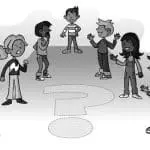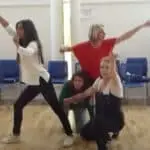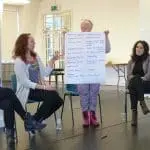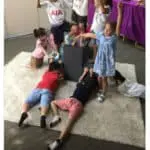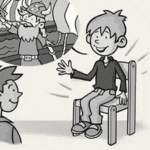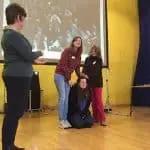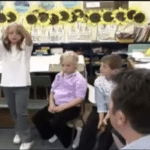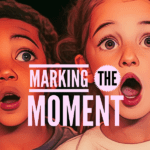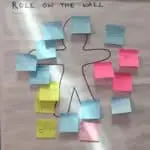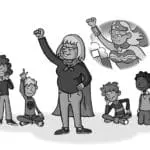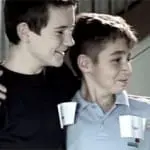Thought Tracking
Characters in a freeze-frame speak their thoughts and feelings aloud.
Thought tracking is a brilliant way to develop language from freeze-frames. Once students have made an image, explain that when you tap them on the shoulder, you would like them to verbalise the thoughts or feelings of their character.
At first, this can just be a few words, but students will soon gain the confidence to express themselves in more detail. It doesn’t take long to thought-track each member of a group to reveal a range of attitudes and feelings from the characters.
Director’s Tips
- Ask characters specific questions, such as what they feel about another character, what they’re dreaming about or what they plan to do next.
- It’s okay if students are pretending to be objects or animals. Animals can express their thoughts – such as “grrrr” or “I’m hungry” and even a tree or a door can have feelings!
- Thought tracking can easily be used in the classroom with children at their desks.
Why use it?
Thought tracking is a quick-fire strategy enabling students to verbally express their understanding of characters and situations without the need for rehearsal. Students gain verbal confidence, preparing the ground for them to move into extended improvisation.
After holding a freeze-frame for just a few moments, it’s surprisingly easy for pupils to identify with a role and express their thoughts, enabling the teacher to gather feedback from all participants.
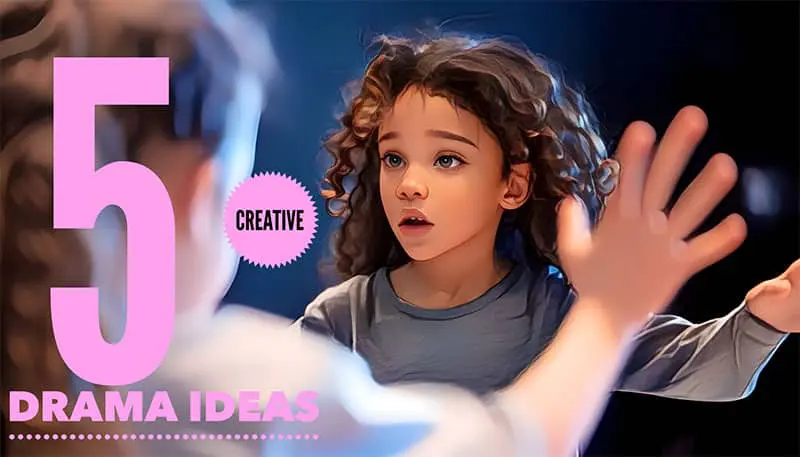
Drama uses the greatest resource that teachers have available to them – children’s imagination. Creative play is a natural part of children’s lives before they start school, helping them to make sense of their place in the world. Such creativity can be harnessed through drama to enable active and interactive learning experiences throughout the primary years and across the curriculum.
CLICK TO DISCOVER 5 WAYS to try out drama in your lessons across the curriculum, to inspire and motivate your students.



